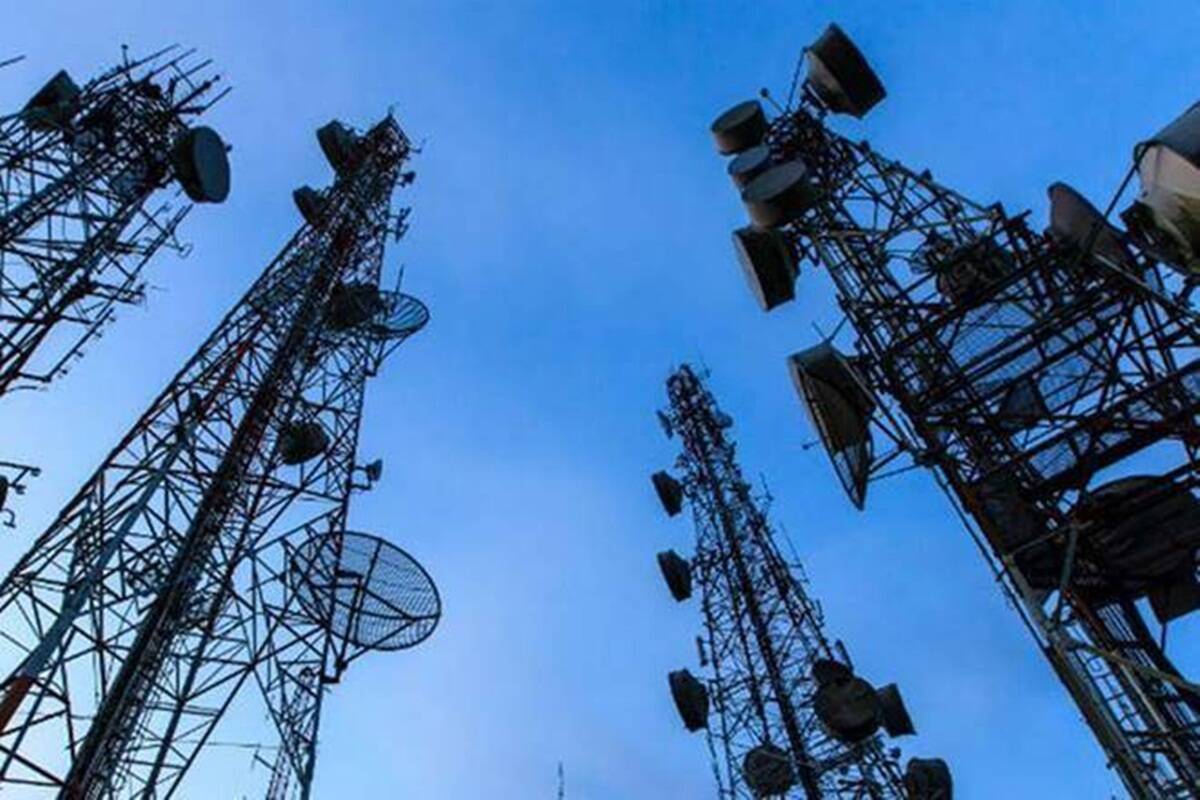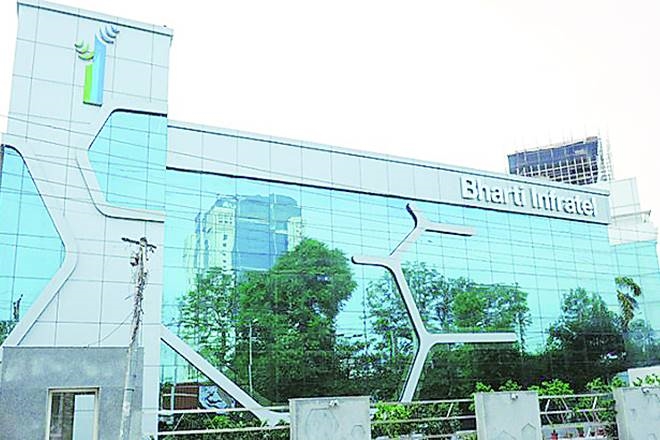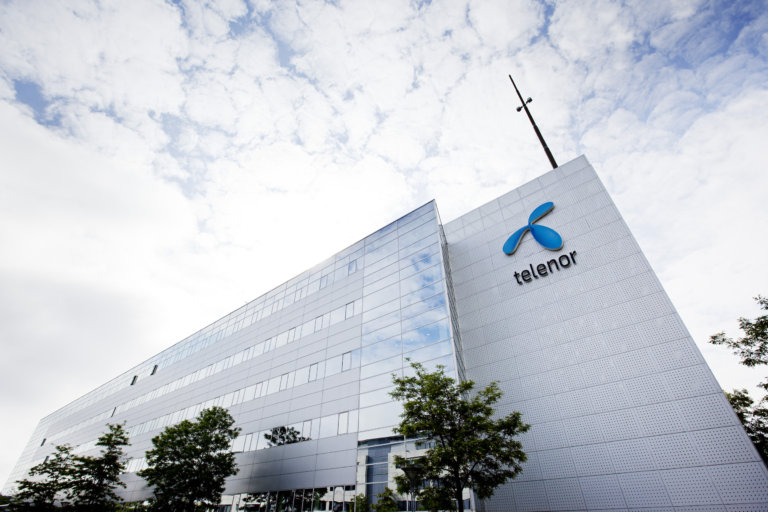Interview
We aim to empower Indian telecom operators: Openwave Mobility
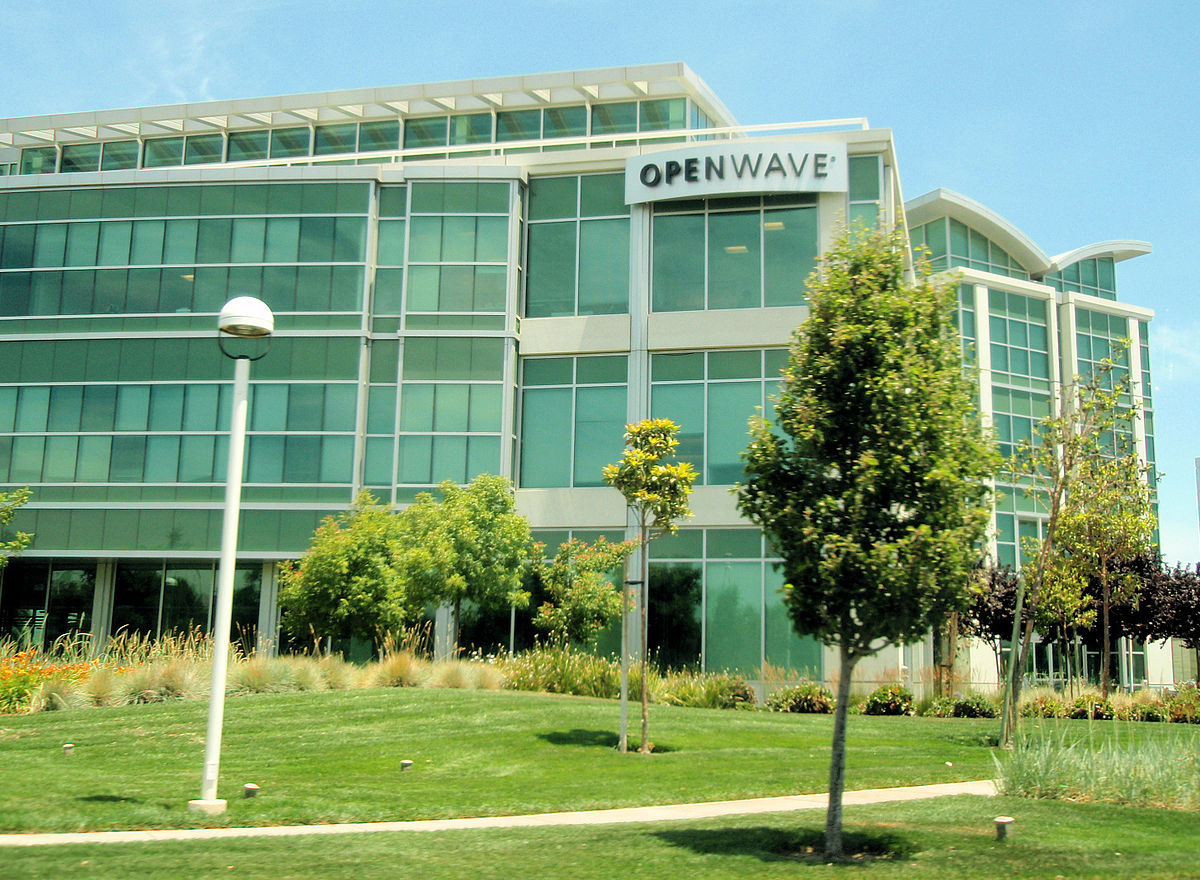

Indranil Chatterjee
In a conversation with Telecom Mirror, Indranil Chatterjee, Sr. Vice President and Kishor Panpaliya, VP of Americas and APAC – Openwave Mobility, elaborated on how the company is helping Telecom Operators optimize their traffic and its various solutions to mobile

Kishor Panpaliya,
operators
Telecom Mirror: Mobile video accounts for a very high percentage of all traffic on mobile networks. How does Openwave Mobility help operators manage & monetise mobile video and ensure the best customer video experience?
Indranil Chatterjee and Kishor Panpaliya: High Definition (HD) mobile video consumption is growing at a phenomenal rate. By November 2018, HD video on mobile networks is likely to be at least 50% of total video traffic. HD can take up to three to four times more bandwidth than Standard Definition. This can adversely impact operators. And as video quality is more important than voice calls, operators face increasing churn if subscribers experience poor QoE. Added to this complexity is the growing use of encryption by OTTs. Owing to this, operators are unable to manage subscriber QoE with traditional optimization techniques.
Openwave Mobility’s traffic management solutions enable operators to manage QoE and monetize mobile data. Our solutions also provide new application-based price plans so operators can launch “video as a service” and notify users of time-critical events and notifications, including purchases etc.
Telecom Mirror: How does Openwave Mobility help operators utilize SDN/NFV on their network? How can Indian telecom operators leverage Openwave Mobility’s expertise?
Indranil Chatterjee and Kishor Panpaliya: :For some operators, the key driver is to enable network slicing for the transition to 5G. However, there are several ways that SDN/NFV can improve quality of service (QoS), service agility and revenue generation, as well as helping to reduce subscriber churn. For example, video QoS is becoming the primary measurement that subscribers use to discern network quality. Today at least 76% of network traffic is video and that percentage is increasing daily; moreover, 80% of that video traffic is encrypted, complicating the task of ensuring subscriber Quality of Experience (QoE).
In fact, according to recent surveys, subscribers say they would consider abandoning their network provider if a video buffers for 6 seconds. By deploying Virtual Network Function (VNF) components that offer the agility to distinguish flows, monitor real time QoE, and optimize the use of RAN resources, operators in India and worldwide can realize significant network traffic optimization. For example, a mobile operator in EMEA was able to deliver 30% more DVD quality mobile videos to subscribers, reduced video stall times by 75% and saved 30% on bandwidth.
Openwave Mobility is a leader in virtual Gi-LAN offering with more than 13 NFV/SDN deployments at network operators worldwide. We have also invested time in effort in integrating our VNFs with leading packet core vendors and their vEPC offering.
We have also published a NFV Playbook which offers mobile operators a practical guide towards progressing and justifying NFV based solutions. Given our 20+ years of expertise, Openwave Mobility is in a unique position to deliver a mature and proven cloud-based Gi-LAN solution, Integra, providing scalable, best in class performance on a software, service orchestration platform. Integra offers a modular NFV platform, encrypted application classification, and dynamic NFV service chaining enabling operators to manage the fast-changing world of OTT formats and roll out new innovative services in 30 days, or less.
Telecom Mirror: In this era of encrypted content and monetising subscriber data, how is Openwave Mobility helping mobile operator customers around the world?
Indranil Chatterjee and Kishor Panpaliya: Encryption protocols from Google, Facebook and others continue to darken mobile networks for mobile operators. Yet, at any given point, operators need to ascertain quickly if the content on their networks is from Netflix, Amazon, YouTube or any other source to manage QoE. Operators need to know: the definition of the video. Is it a live stream or download? What codec is being used to deliver the video and to what device? Operators can’t manage what they can’t see. They need much more than conventional traffic management technology to gather data and make informed decisions.
To gain insight with analytics, operators need to abandon the old appliance-based Deep Packet Inspection (DPI) approach and adopt pure software solutions, like Openwave Mobility’s Video Traffic Management solution. Our solutions are designed to be software-based, agile and virtualized so they can be easily deployed in the cloud, with heuristics for encrypted video. Moreover this technology allows operators to glean data for application-based metering plans or promotional add-on services to secure additional revenue generating opportunities.
Telecom Mirror: Who are the key customers of Openwave Mobility and what are the key solutions Openwave Mobility offers that helps operators deliver outstanding QoE?
Indranil Chatterjee and Kishor Panpaliya: We are proud to be associated with some of the major Tier-1 telecom groups worldwide including Vodafone, Telefonica, Orange, Zain, Softbank and AT&T. We have recently deployed our Traffic Management solution at a major Tier-1 Indian telecom operator and we are witnessing impressive results.
An insatiable appetite for video has raised the bar for subscribers’ overall QoE expectations, putting pressure on mobile operators’ ability to maintain QoS. However, while it is true that subscribers hold operators responsible for video quality, research shows that subscribers also are willing to pay more for good quality video.
We have proven QoE management and monetization solutions such as Secure Traffic Manager, TCP Acceleration, IP Traffic Filtering and SmartIDM built on our award-winning Integra NFV platform. In addition to that, we provide a comprehensive software-based DPI for encrypted and unencrypted traffic as well as Traffic Analysis dashboards to understand the traffic profile and gain actionable insights for the marketing and operations teams.
Telecom Mirror:What are Openwave Mobility’s plans for the Indian market?
Indranil Chatterjee and Kishor Panpaliya: We have invested heavily in building a self-sufficient centre of excellence in Pune, Maharashtra, where we have cross-functional expertise including sales, pre-sales, product management, engineering, professional services and global customer support teams. A Tier-1 operator in India has already experienced the benefits of deploying our Video Traffic Management & TCP Acceleration solution, and we are engaging with other Indian telcos by successfully conducting large-scale trials.
Our penetration strategy for the Indian market is two-fold. Firstly, we intend to leverage our global Tier 1 deployment expertise and our major local presence to create a win-win scenario for Indian network operators through our tested and proven All-IP Traffic Management and Subscriber Data Management solutions. Secondly, we have mature OEM relationships with major network infrastructure vendors who have significant market share in India and are actively engaged in migrating the packet core domain to NFV. Openwave Mobility solutions have been pre-integrated and certified as VNFs within their platforms, offering our Indian operator customers an alternate choice of procuring our solutions.
There is a price war going on in India between operators involving free or incentivized data, which is causing a hockey stick type of growth in mobile data consumption. Approximately 70% of this data consumption is streaming video traffic amounting to more than 1.65 billion hours per month. On occasions such as a IPL final, almost 10+ million concurrent streaming users on mobile networks can cause congestion and video buffering – which adversely impacts subscriber QoE.
What makes managing this data even more complicated is that it’s all encrypted! We aim to empower Indian telecom operators so they can prepare and manage the growing tide of encrypted data and maintain QoE and profitability. We are the market leaders in our domain with more than 40+ Tier 1 mobile operators worldwide and can leverage that expertise in India.
Interview
We are partnering with schools throughout India:Bipin Dama

(Saras-3D) India’s first stereoscopic 3D learning solution for science and mathematics that brings international learnings and best practices to India. The company operates in India through its wholly owned subsidiary 3D EdTech Pvt Ltd.
An industry veteran with over 33 years of experience in the technology industry, Bipin has a proven track record of successful product delivery from concept to deployment with substantial revenue generation and shareholder returns. He holds 37 granted US patents.
Bipin founded Saras-3D, Inc. with an aim to create the right foundation for learning and acquisition of knowledge to help shape STEM innovators and problem solvers of tomorrow and empower them to compete and succeed globally.
Prior to founding Saras-3D, Inc., Bipin was key member of two previous start-ups with successful exits, AANetcom acquired by PMC Sierra in 2000 and Lightwire acquired by Cisco Systems in 2012. Prior to the two start-up experiences, Bipin worked as an engineer in AT&T Bell Laboratories, New Jersey, USA and Larsen & Toubro, Ltd, Mumbai, India.
Bipin holds a B.E. (Electrical Engineering) from Marathwada University, Aurangabad and Master of Science Degree (MS – Electrical and Computer Engineering) from Rutgers University, New Jersey.
Recently, in a conversation with Telecom Mirror, Bipin Dama, Founder & CEO of Saras 3D Inc. elaborated on 3D Learning and its online teaching and learning growth and future plans.
Telecom Mirror: How did the idea for Saras-3D come about?
Bipin Dama: We began by observing how the divide between those who do and do not have access to high quality education determines students’ opportunity to reach their full potential. If more students have access, then more will be able to shape their lives and fulfil their dreams. This is how education creates more possibilities in the world. And that’s why we’ve made it our mission to democratize high quality 3D hands-on learning so that everyone can have that chance.
Telecom Mirror: What is Genius 3D Learning?
Bipin Dama: Genius 3D Learning uses 3D simulations and virtual hands-on learning methods to create stimulating, highly engaging learning experiences. It fills two large gaps in the market. First, we noticed that other solutions relied solely on passive learning; i.e. watching videos & reading text. Secondly, we also understood that according to NSSO, only 24% of households have reliable internet access.
We designed Genius 3D with a three-dimensional approach so that students can have a hands-on, interactive learning experience, just as if they were in a real-life laboratory. This promotes sustained engagement and helps students learn faster and more efficiently.
Then, we designed Genius 3D Learning content to be accessible without an internet connection so that it can be used by students across the entire country.
Telecom Mirror: There are already large established players in the education space. Also, 3D learning is not very accessible for the larger number of middle-class consumers, so how are you planning to grow?
Bipin Dama: Middle-class consumers often lack access to devices, a reliable internet connection, or a dedicated quiet place to study. The 2017-2018 report from National Sample Survey Office (NSSO) showed that only 24% of the Indian population had reliable internet access, leaving most students behind. They can only passively read materials they happen to find. While this setup privileges children who have reliable internet service, even families with adequate resources find it difficult to keep children engaged online.
Saras-3D has a broader reach because Genius 3D Learning does not require an internet connection to access the learning content. Everything a student needs to succeed is included with Genius 3D Learning bundles.
Parents are adopting Genius 3D Learning to help their children study from home effectively. We are also partnering with schools and institutes to integrate our technology into their existing systems. It’s this dual demand from both parents and teachers that will fuel continued growth.
Telecom Mirror: What has been the investment so far into developing Genius 3D? Can you elaborate on funding and your expectations?
Bipin Dama: Saras-3D is funded by multiple investors. As we continue to grow, we will seek additional funding rounds to support future growth & expansion.
Telecom Mirror: Saras 3D Learning solution claims to be India’s first 3D stereoscopic learning solution. Can you elaborate on this? What makes it so different from the rest of the products available in the market?
Bipin Dama: To stay engaged, students need a way to mimic real-world learning experiences. Genius 3D Learning uses 3D simulations and virtual hands-on learning methods to create stimulating, highly engaging learning experiences. This empowers students to interact & play with scaled models that depict concepts the way they exist in real life. By learning through exploration, students are engaged just as profoundly as they would be learning in a real-life laboratory. We also utilize virtual labs and 3D videos with online learning fundamentals such as quizzes and analytics. This way, students are guided through multiple media to understand each concept thoroughly.
This technique is based on stereoscopy, a technology that combines special eyeglasses with a booster box to create a three-dimensional, interactive experience. Students can learn twice as fast through interacting with realistic, scaled models because they learn through doing rather than simply learning about concepts. This leads to deeper understanding and better recall. In fact, many students are already using this technology to master competitive exams like JEE and NEET.
Saras-3D has a broader reach because Genius 3D Learning does not require an internet connection to access the learning content. It is interactive, so while students are actually learning, they feel like they are playing in a lab-like setup. Everything a student needs to succeed is included with Genius 3D Learning bundles.
Telecom Mirror: Classroom teaching has been an important part of a student’s life. In the new normal, that interpersonal connection is missing! How is Genius 3D helping bridge those gaps?
Bipin Dama: Through three-dimensional learning, students explore and play in a hands-on, interactive way, just as if they were in a real-life laboratory. This hands-on engagement helps students better understand the material and create meaningful connections.
Genius 3D Learning also provides 3D video lectures that thoroughly explain the concepts behind the material in a way that breaks down difficult concepts to simpler elements and helps students better understand the theories more deeply.
This helps bridge the gap between in-classroom and at-home learning so that students can learn quickly and efficiently, no matter where they are.
We are also working with schools & educators so they have more tools to fire students’ imagination and teach better.
Telecom Mirror: How do you think technology can impact the education industry? How can it help in achieving universal access to education?
Bipin Dama: Technology has the power to democratize high quality education throughout the world. With thoughtfully designed technology, students in rural areas can now have access to the same caliber of education as their wealthier, more urban counterparts. By learning in a virtual, interactive experience, students can explore concepts just as if they were in a real-life laboratory. This creates more opportunity for students to reach their full potential, no matter where they are.
That’s why it was so important for us to provide access to our content without the internet. It opens the possibility for more students to use it and reach their full potential.
Telecom Mirror: Are there any plans to launch Genius 3D in markets other than India?
Bipin Dama:While we are open to future expansion, we don’t have immediate plans at this time.
Telecom Mirror: Tell us about the way forward for Saras-3D?
Bipin Dama: Saras-3D will continue reaching out to a broader range of parents and students across the country to help more students succeed. We are dedicated to equipping them with the best technology available, which also helps them prepare for JEE, NEET, and other entrance exams. Simultaneously, we are also partnering with schools throughout India to support teachers in the classroom. Using this technology, teachers will better retain their students’ engagement and instill the meaning behind complex concepts.
Interview
During the lockdown period, we are still carrying out limited business activities: Diwakar Belavadi
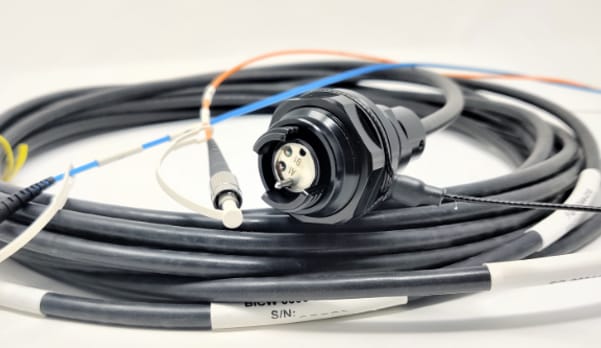
Citadel Intelligent Systems Ltd, an optic fibre manufacturer from Bangalore, is betting high on optic fibre-backed opportunities in Indian defence sector while it is fast-tracking to resume its manufacturing that was halted due to lockdown for Covid-19 emergency. It has rolled out an array of safety guidelines including Disinfection and Sanitization activities, Social Distancing norms, Screening, Prevention and Awareness mechanisms, Digital monitoring via Arogya SETU app, Safe transportation and Collaboration with Medical health Centers.
In a conversation with Telecom Mirror, Diwakar Belavadi, Director – Operations & Strategic Projects, Citadel Intelligent Systems Ltd the impact of Covid-19 on Indian defence manufacturing sector, India’s flexibility for complete use of optic-fibre for essential requirements and how the company is optimistic about its growth as the sector progresses. Edited excerpts below:
TelecomMirror: What is the impact of COVID-19 on India’s defence manufacturing sector?
Diwakar Belavadi: Covid-19 has had an impact on India’s defence sector by way of:
(a) handicapped the supply chains due to shut-down of manufacturing facilities which would supply components and sub-systems
(b) impact on Business revenues of companies due to postponement of project timelines thereby reducing the demand defence components, sub-systems and systems.
(c) Government considering cut-back on defence spending and procurement impacts business revenues of companies adversely
(d) Business Development efforts in defence sector affected adversely due to lock-down on business travel, extended timelines for product approvals & trials due to understaffing in test labs & OEMs in India and across the globe, potential delays in kick-off of contracts / procurement programs previously executed between companies & governments.
( e) adverse impacts on company’s financial incomes due to delays in project timelines leading to lower profits, higher inventories and investments in capital equipments across various manufacturing companies in India who support defence sector.
Telecom Mirror: Taking cognizant from the current situation of emergency halt and lockdown, is there any course correction that the sector needs to consider in order to be future-ready, post the Covid-19?
Diwakar Belavadi:Considering the Covid-19 impact which the industry or sector has faced today, the sector and companies need to explore options to be future-ready after the pandemic recedes in India. Some of the key options which may be considered by the sector and companies supporting the sector could be:
a. Cost Optimization, Spending on Capex to be discretionary and project based / project specific.
b. Drive Manufacturing efficiencies through technological interventions by increasing the automation levels wherever possible
c. Focus on Supplychain efficiencies by establishing tighter control on inventories and procurement efficiencies via strategic sourcing of components by exploring alternate sources
d. Avoid downtimes of machines through techniques of predictive maintenance and connected machines.
e. Use digital interventions wherever possible to reduce travel costs yet still drive business development efforts during this challenging period.
f. Companies supporting defence sector to formulate “de-risking” strategies
Telecom Mirror: Coming to optic fibre application in defence, how flexible is India to adapt to complete use of optic fibre in its day-to-day routine?
Diwakar Belavadi: Dedicated Spectrum for Indian Armed forces: Indian Defence Sector has considered Fiber Optics as an essential requirement for the armed forces and hence with the support of GoI through the Department of Telecommunications (DoT) started a project called Network for Spectrum (NFS). Through this initiative, it has helped to setup a fiber optics network for the exclusive use of Indian Armed Forces. This is a major step taken by the GoI recognizing the importance of fiber optics network specially for the armed forces.
Penetration of Fiber Optics in Indian Defence Systems: As far as penetration of Fiber Optics in the defence systems and sub-systems are concerned, we are already seeing an increased adoption in the usage of fiber optics in newer systems / platforms which are being designed. While legacy systems still adopt ethernet & RF communication links, the newer tactical communication systems are adopting more and more Fiber Optics content. This is due to the advantages which Fiber Optics has over its legacy counterparts.
As we are aware, adoption of Fiber Optic interconnectivity in Defence systems designed by other countries such as Israel, USA, France, Russia etc. is higher; Hence as a part of Technology transfer under offset obligation, these systems would also present an opportunity for more adoption of fiber optic technology in such defence systems.
Applications where Fiber Optics is already used in Indian Defence requirements: Typically Ruggedized Fiber Optic Interconnectivity solutions are deployed in Tactical communication requirements of Ground Military, SAT-COM, weapon communication systems, Naval on-board communications (such as Radar & Sonar), Security & Surveillance systems (UGVs, Mine sweepers etc,) Perimeter based intrusion detection systems, Ground Communication & Control shelters of UAVs etc.
Telecom Mirror: Government had considered optic fibre application for defence sector long back. Where does it stand now?
Diwakar Belavadi: As stated above, GoI has considered Fiber Optics as an essential requirement for the armed forces. This is a major step taken by the GoI recognizing the importance of fiber optics network specially for the armed forces. This comprises of ~ 60,000 OFC Kms to be laid across India in different OFC routes. The project is still under progress across various regions.
Telecom Mirror: Which are the new areas that can have a touch of optic fibre for better connectivity?
Diwakar Belavadi: As mentioned earlier, typically Ruggedized Fiber Optic Interconnectivity solutions are deployed in Tactical communication requirements of Ground Military, SAT-COM, weapon communication systems, Naval on-board communications (such as Radar & Sonar), Security & Surveillance systems (UGVs, Mine sweepers etc,) Perimeter based intrusion detection systems, Ground Communication and Control shelters of UAVs etc. Increased adoption of Fiber Optic technology can happen in areas of Security & Surveillance, especially in Perimeter based intrusion detection systems, Airborne systems such as in UAVs, MFD’s in Fighter aircrafts & cockpit electronics, Sensing & Vision based systems, Structural analysis of airborne systems and Advanced Weapon Systems.
Telecom Mirror: At CIS, how are you coping with the current lockdown considering the stoppage of the production? Have you encountered any demand-supply issue?
Diwakar Belavadi:These are challenging times for all companies across various sectors. Currently our production activity is halted due to the lock down and are awaiting Government permissions to resume manufacturing.
During the lockdown period, we are still carrying out limited business activities. Using hang-out sessions and VCs, we are conducting project review and engineering review meetings to be ready for execution once the manufacturing activity starts post the lock down. We are also engaging in technical and commercial discussions with our customers via digital interfacing on current and future project opportunities. Regarding, demand-supply issue, during the lock down situation, yes we have encountered supply chain challenges due to manufacturing stoppages and lower outputs from our suppliers across the globe on account of raw material shortages and limited manpower deployed in factories during the lock down period.
Telecom Mirror: What sort of measures are you planning to enforce at your plant when you resume production?
Diwakar Belavadi:CIS as a company has rolled out a comprehensive Guideline and Strategy document to carryout operations during and after Covid-19 lockdown. These guidelines and strategies encompass all the relevant and applicable guidelines and regulations issued by the Central Government and State Government. The guidelines rolled out by CIS covers (a) Disinfection & Sanitization activities (b) Implementation of Social Distancing norms (c) Screening & Monitoring mechanisms at the facility (d) Prevention & Awareness mechanisms ( e) Digital monitoring via Arogya SETU app (f) Communication Program to increase awareness among employees (g) Safe transportation & (h) Collaboration with Medical health Centers for health check-ups. In addition to this, the document also covers a detailed Employee Health Framework with the primary goal of ensuring SAFE & Healthy working environment for all our employees, Key Stake holders and Business Partners. The guideline document details the actions which will be implemented by CIS prior to resumption of production and while operating the facility post the lockdown.
Telecom Mirror: On the industry, what is CIS’ contribution in developing robust optic fibre solutions for Indian defence sector?
Diwakar Belavadi:CIS along with its strategic partners are involved in providing customized Ruggedized Fiber Optic Interconnectivity solutions which are deployed in Tactical communication requirements of Ground Military, SAT-COM, weapon communication systems, Naval on-board communications (such as Radar & Sonar), Security & Surveillance systems (UGVs, Mine sweepers etc,) Ground Communication & Control shelters of UAVs etc. CIS is working with Defence OEMs in India and outside of India on projects which are having requirements of Fiber Optic Interconnectivity products. CIS also works with DRDO organizations catering to their fiber optic interconnectivity requirements. CIS, comprising of a highly experienced and knowledgeable Engineering team, can support its customers in designing Fiber Optic Interconnectivity links to suit their requirements & also to improve the efficiency of their systems by adopting Fiber Optics technology.
Telecom Mirror: As an SME player, how easy it is to operate in the sector and make inroads into government assignments?
Diwakar Belavadi: Some of the limited advantages being a MSME and operating in the Indian defence sector: The MSME companies carry an advantage when it comes to participation in defence offset programs wherein the offset multiplier of 1.50 is permitted if the Indian offset partner is a MSME. Gives MSMEs more business opportunities due to this regulation.
Second, there is a regulation laid out by GoI for MSMEs in regards to the payment terms of receivables due to MSMEs. Hence through this regulation, the MSMEs are insulated from the financial risk of non-payment of receivables by the customers of MSMEs.
Third, for registered MSMEs, waiver of EMD amounts eligible for tenders related to PSU OEMs and DRDO.
Fourth, procurement goal defined under Public Procurement policy rolled out by GoI, MSME, which will help in increased procurement from MSME suppliers.
Interview
We would be announcing some very interesting partnerships shortly: Manoj Kumar Pansari

By Sanjeeb Kumar
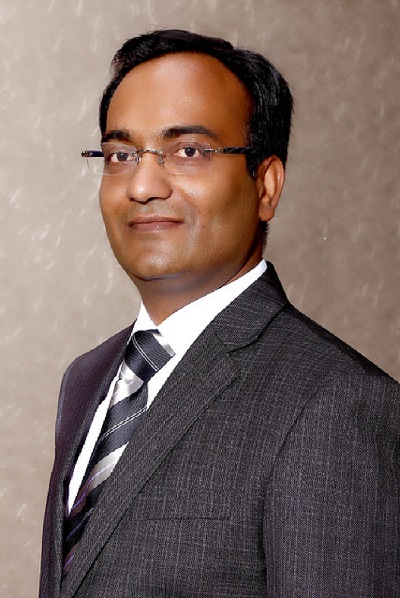 In a conversation with Telecom Mirror, Manoj Kumar Pansari – CEO, Astrum Holdings elaborated on accessories market in India
In a conversation with Telecom Mirror, Manoj Kumar Pansari – CEO, Astrum Holdings elaborated on accessories market in India
Telecom Mirror: Could you highlight the current trend of accessories market in India?
Manoj Kumar Pansari:The Accessories market is increasingly becoming Gizmo friendly, consumers are on the constant lookout for advanced technology products in innovative and aesthetic design. Every smartphone user owns a minimum of 3 to 4 accessories because of the rising power of consumers buying demand. The current Trends revolves around Wireless – Wireless Technologies shall dominate the future be it Wireless Audio or Wireless Charging. Also, there shall be a surge in Power Banks and the trend towards lighter, slimmer and larger capacity shall dominate. Lastly, Wearables holds the potential to revolutionize the Market rapidly moving towards IOT.
Telecom Mirror: What is the overall performances of Astrum in the Indian market?
Manoj Kumar Pansari: Astrum’s performance in the Indian market has been robust, we have been consistently registering growth month on month both in terms of revenue as well as Market Penetration. We have seen that the quality which wins the customer also brings loyalty. Price is again another key element; we provide superior quality products at an affordable price. Every day we are opening up newer markets whereby reaching out to more consumers by the day. Online business is a major area of focus for the brand this year and we are working with a very strong partner on the same, we would be announcing some very interesting partnerships shortly.
Telecom Mirror: How do you aspire to offer robust, reliable and affordable products in the market?
Manoj Kumar Pansari: Consumer centric R&D has always be the strength of Astrum as a brand, we are constantly working towards reaching best in class technology products to the consumers while remaining focused on the price: performance ratio of our products. With a failure rate which is in decimals we are happy to be delivering reliable products time and again.
Telecom Mirror: What is your marketing plan to penetrate in the Indian market?
Manoj Kumar Pansari: Indian market has always remained a challenge with low price expectations, high competition, geographical penetration etc. We are constantly expanding our product categories, like we recently revamped our entire range of Audio Products, we are also adding quite a few products to our Smart Category. It becomes critical to reach the message to our consumers specially in Tier 2 & Tier 3 cities, to counter this challenge; we are planning some very aggressive measures to reach out to the consumers in these cities. India being a price sensitive market, more often than not quality takes a beating to accommodate more aggressive price points. We in Astrum spend our energies in balancing the price requirements while not compromising on the quality standards. We also adopt a 360ᵒ strategy to build a brand recall with our consumers which includes and not limited to TVC’s, Print Ads, Online & Social Media advertising.
Telecom Mirror: How did you promote through your product through retail chain?
Manoj Kumar Pansari:We have announced various schemes along with the launch of our new products, and are constantly reworking the schemes on our existing products, combined with various activities and programs to provide the much-required air cover to assist in Sell Out, we devise our strategies with a dedication to our core faith and with our partner interest as the key parameter. Our loyal retail partners have also over the period of time got convinced with the quality and reliability of the Astrum products which gives the comfort that is most required while associating with any brand.
Telecom Mirror: How is Astrum, as a company, playing a pivotal role in changing the digital technology scenario?
Manoj Kumar Pansari: With Technology and Innovation at the core of our organization, we are continuously working towards delivering innovative technology products to make our consumers life easier. Encouraged by our success as leading mobile & IT accessories player in the Global markets for a decade now, Astrum aims to establish the same league in India. With the key vision, to think smart and challenge the norm by creating high quality products that are innovative and serve the purpose of enhancing the way people live. As an extension of our above effort it becomes pertinent for us to keep working with newer technology as part of our R&D process. We have many firsts to our credit. This helps us to add our two pennies worth into the digital technology landscape.
Telecom Mirror: What are your future plans?
Manoj Kumar Pansari: Our R&D team is constantly developing new products towards enhancing the living standards of our Consumers. Currently there is lot of work being done on the Smart Products category as said before. We are also enhancing our “Made for Apple” range to bring more innovative products. Our team is also doing some pioneering work in AI & IoT. Balancing quality at optimum price points shall outline the way forward. Also, expansion in terms of product portfolio by bringing niche solutions, along with a strong partner network and team remains the key focus area for the brand.

